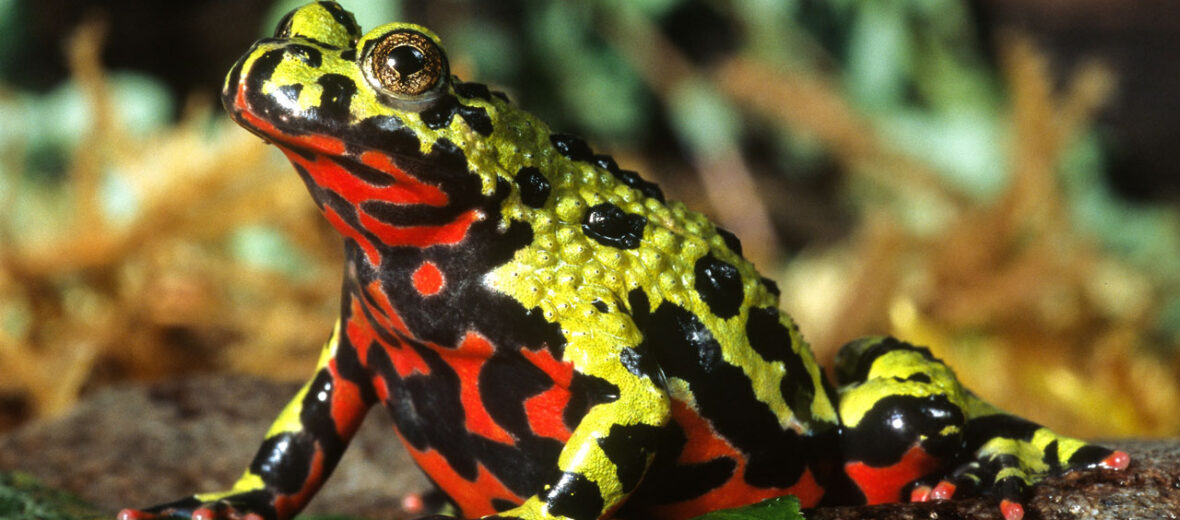
The Oriental fire-bellied toad hails from China. There are 6 known species of fire-bellied toads in all. But this article will be on the Oriental species. They prefer rainforests, marshes, wetlands, lakes, and ponds. As long as the environment is moist and cool, and has plenty of food, they’re happy. These toads are also popular in the exotic pet trade and are bred, primarily, in captivity for sale to pet stores around the world. Even though they endure habitat loss, pollution, collection for the pet trade, and are subject to death at the hands of the deadly Chytrid fungus, these toads are still listed as Least Concern by the IUCN. However, their numbers are decreasing.
First the Stats…
Scientific name: Bombina orientalis
Weight: Up to 2 ounces
Length: Up to 2+ inches
Lifespan: Up to 15 years
Now on to the Facts!
1.) Oriental fire-bellied toads utilize aposematic coloration to warn of their poisonous skin secretions.
2.) If threatened, these critters will typically roll over onto their back, in an action called the unken reflex, and display their brightly colored red belly, warning of a nasty surprise, if they’re eaten.
3.) They may be poisonous, but they still have predators that would want to make a meal out of them. Foxes, lizards, snakes, cats, large fish, and birds all prey on these little toads.
4.) These toads prey on worms, molluscs, and insects as adults. As larvae, they feast on algae, plants, fungi, detritus, and protozoans.
5.) The poison from their skin can’t kill a predator, but it will not only taste nasty, it will also cause skin irritation.
But wait, there’s more on the Oriental fire-bellied toad!
6.) These toads, like other toads, are ambush predators, as adults. They wait for passing prey to happen by, then they snag them by jumping on them with a gaping mouth.
7.) Prey is swallowed whole and, like other frogs and toads, they use their forelimbs to help stuff their prey into their mouths as well as using their eyes to help swallow their prey. That’s right. They push the food down their throat with their eyeballs.
Did you know…?
The poison secreted from their pores prevents bacterial and fungal infections, to a degree. So they are less likely to become infected with Chytrid. But it still happens.
8.) After mating, in the spring, the female will lay an egg mass of up to 300 eggs on leaves that overhang water. The male then fertilizes the egg mass and life begins anew.
9.) When ready to metamorphose into tadpoles, the larvae will emerge from the egg and drop into the water below.
10.) Their secreted poison has been noted to smell of leeks (onions).
Now a Short Oriental Fire-Bellied Toad Video!
Be sure to share & comment below! Also, check out the Critter Science YouTube channel. Videos added frequently!
Want to suggest a critter for me to write about? Let me know here.



